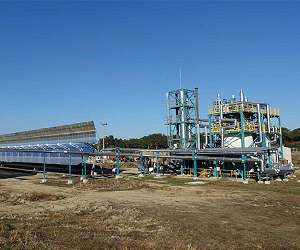Clean, sustainable energy solutions are essential to meet the ever-increasing energy demands of the human population. High efficiency solar cells are promising candidates to reduce carbon emissions and achieve carbon neutrality.
In this regard, solution-processed copper indium gallium sulfur diselenide solar cells (CIGSSe) solar cells have generated significant interest owing to their excellent photovoltaic properties, such as high absorption of visible light, stability, and tunable bandgap. However, large scale, practical applications are limited by a two-fold challenge.
Firstly, solution-based CIGSSe fabrication yields very low power conversion efficiency and often uses solvents that are not environment-friendly. Secondly, to achieve higher power conversion efficiency, fabrication methods rely on expensive vacuum environment that leads to substantial material loss.
To this end, a team of researchers led by Professor JunHo Kim from Global Energy Research Center for Carbon Neutrality, Incheon National University, Korea have developed a low-cost and eco-friendly fabrication method of high efficiency CIGSSe solar cells.
In a study made available online on 4 September 2022 and subsequently published in volume 32 Issue 46 of Advanced Functional Materials on 10 November 2022, the researchers used aqueous spray deposition in an air environment and developed a CIGSSe solar cell with power conversion efficiency (PCE) larger than 17 %. “For spray solution, we used deionized water, which is eco-friendly and cheapest solvent till date,” explains Prof. Kim.
Moreover, conventional solution-based fabrication processes rely on environmentally hazardous, cadmium-based buffers for the optimization of thin-film solar cells. In this novel technique, the researchers used indium sulfide-based buffer that is a cadmium free, eco-friendly alternative.
The researchers further investigated the alloying effects of zirconium on indium sulfide buffers. Remarkably, the team found that zirconium alloying increases the electron concentration in the buffer.
Moreover, this method “passivates” or reduces defect states in the CIGSSe absorber, optimizing the charge transfer between various interfaces, leading to enhanced PCE. Further, the researchers achieved even more defect passivation and higher PCE, of more than 17%, by alloying the CIGSSe absorber with potassium. The fabricated cell has an optimum bandgap for high efficiency applications such as a bottom cell or a tandem cell.
This novel technique is cost-effective and easily scalable as it does not require a vacuum environment. As Prof. Kim observes, “We carried out spray deposition in an air environment without using any high vacuum facility, which significantly reduces fabrication cost and thus makes the fabrication technique more practical and competitive in the industry sector.”
This development simultaneously improves the performance and fabrication of CIGSSe solar cells. This will revolutionize the application of these cells in integrated photovoltaic devices and vehicle integrated photovoltaic devices, and as energy sources for internet of things devices.
Research Report:High Efficiency Aqueous Solution Sprayed CIGSSe Solar Cells: Effects of Zr4+-Alloyed In2S3 Buffer and K-Alloyed CIGSSe Absorber
Related Links
Incheon National University
All About Solar Energy at SolarDaily.com
|
We need your help. The SpaceDaily news network continues to grow but revenues have never been harder to maintain. With the rise of Ad Blockers, and Facebook – our traditional revenue sources via quality network advertising continues to decline. And unlike so many other news sites, we don’t have a paywall – with those annoying usernames and passwords. Our news coverage takes time and effort to publish 365 days a year. If you find our news sites informative and useful then please consider becoming a regular supporter or for now make a one off contribution. |
||
|
SpaceDaily Contributor $5 Billed Once credit card or paypal |
SpaceDaily Monthly Supporter $5 Billed Monthly paypal only |
|

![]()
Concentrating solar thermal technology ready for efficient use in Germany
Stuttgart, Germany (SPX) Dec 15, 2022
Concentrating solar thermal systems are still little known in Germany, although they are a highly efficient approach to producing heat from solar energy. In such a system, specialised mirrors arranged in different geometries are used to focus the Sun’s rays on a defined area, such as a circle or a line.
This heats a heat transfer medium, which then flows through a heat exchanger. Concentrating solar thermal power plants, which are today primarily located within Earth’s sunbelt, use this heat to ge … read more
